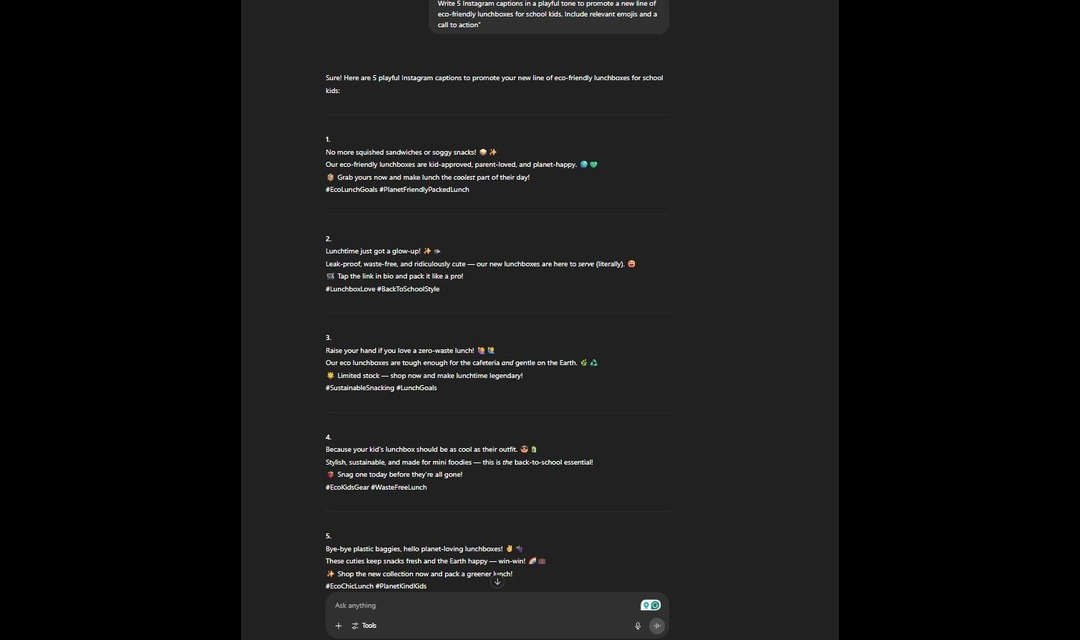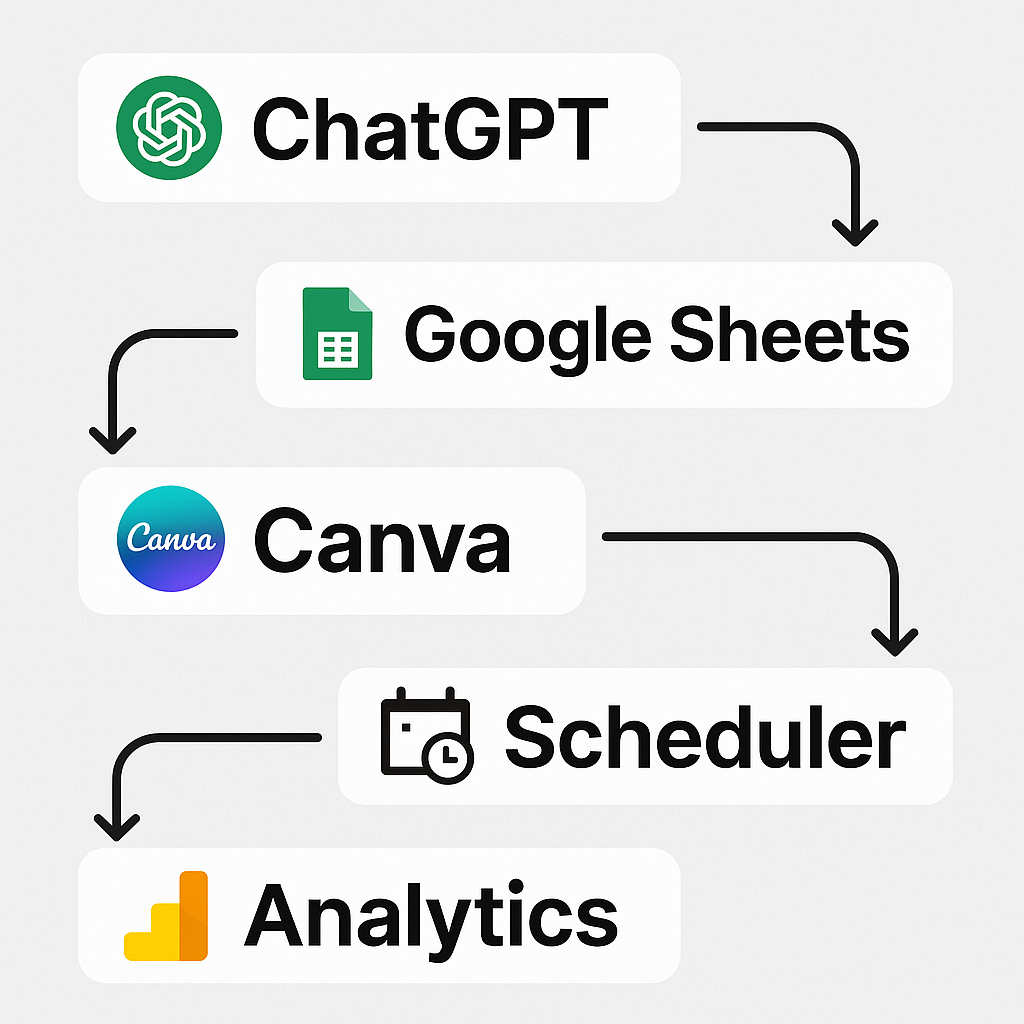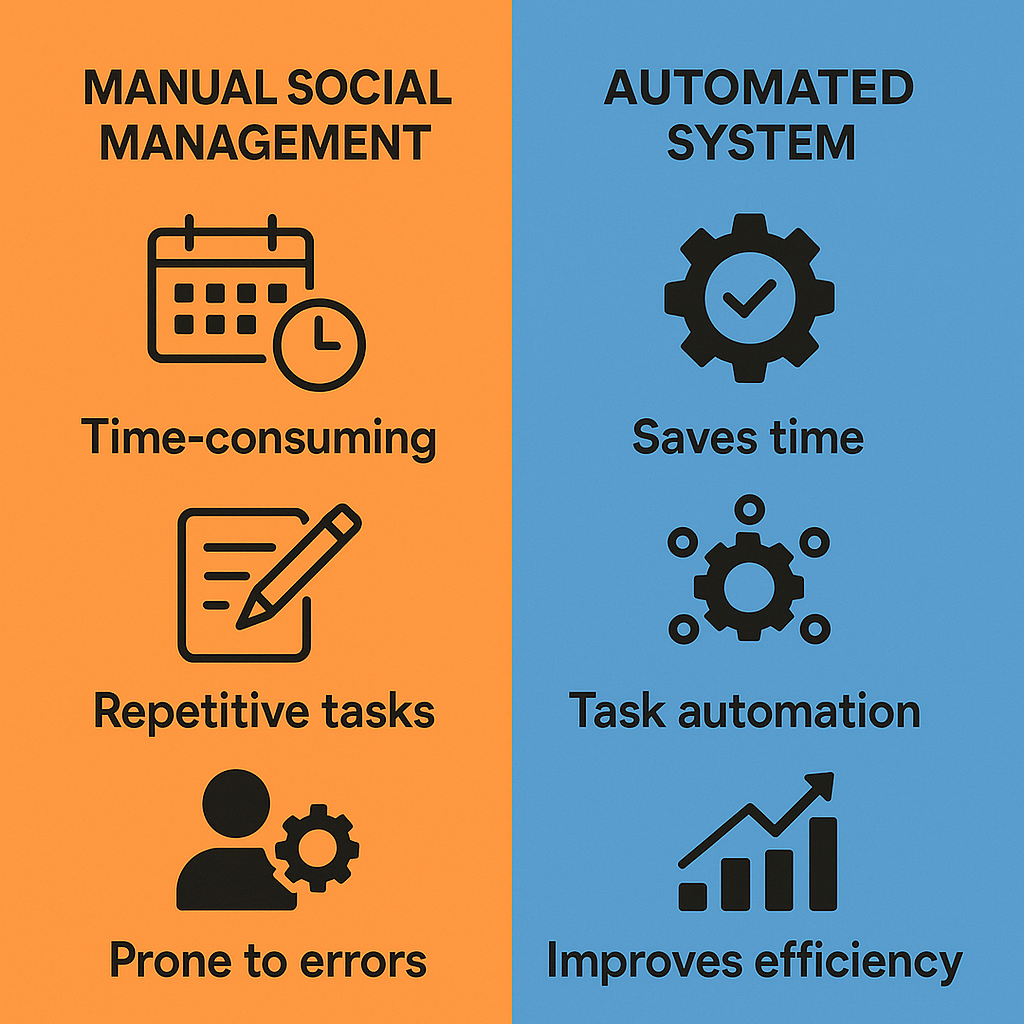
Social media can feel like a full-time job. Between brainstorming captions, designing visuals, and keeping up with daily posts, it’s easy for small business owners and social media managers to get overwhelmed. That’s where social media automation comes in—a smarter way to stay visible online without burning out.
That’s where social media automation steps in. With the right tools and a well-mapped workflow, tasks like content creation, design, planning, and scheduling can be streamlined to save hours each week. The best part? It doesn’t have to feel robotic. A well-balanced system can still reflect a brand’s voice while easing the workload.
This blog examines how tools like ChatGPT, Canva, Google Sheets, and content scheduling platforms work together as part of social media automation to create a seamless, scalable strategy—one that maintains efficiency without sacrificing the human touch.
What Role Does ChatGPT Play in Content Creation?

Content creation is often the biggest time sink in social media management. ChatGPT helps solve this by acting as a tireless creative assistant, capable of generating content for every stage of the funnel—from awareness posts to promotional hooks to thoughtful engagement questions.
With the right prompting, ChatGPT can:
- Draft post captions in different tones (friendly, professional, witty, etc.)
- Generate hooks or call-to-actions (CTAs) for reels and carousels
- Repurpose blog content into bite-sized social content
- Suggest hashtags based on niche or intent
- Write variations of similar messages for A/B testing
The key to using ChatGPT effectively is customization. Generic prompts produce generic results. But when fed with brand guidelines, content pillars, and audience profiles, ChatGPT becomes a reliable co-creator. For example, a prompt like:
“Write 5 Instagram captions in a playful tone to promote a new line of eco-friendly lunchboxes for school kids. Include relevant emojis and a call to action” yields content that’s ready for light editing—not a full rewrite.
And since ideation is often the bottleneck, having ChatGPT handle the first draft accelerates the creative process while keeping the human voice intact through revisions. For more strategic planning tips, check out our post on Social Media Strategies for Small Businesses in 2025: What Actually Works.
How Does Canva Streamline the Design Process?
Once the caption is ready, the next step is visuals—and Canva makes this step both accessible and efficient.
For many small businesses, hiring a designer for every post isn’t practical. Canva closes that gap by offering:
- Drag-and-drop design tools
- Ready-made templates for all major platforms
- Brand kit management (fonts, colors, logos)
- Collaborative folders for teams
- Magic Resize to adapt a single design to different aspect ratios
The real magic of Canva lies in template-based design systems. Instead of designing from scratch each time, users can create post templates for quotes, announcements, product promos, testimonials, etc. Then, when new content is created via ChatGPT, it’s simply a matter of updating text and swapping imagery.
Some advanced users go a step further by using Canva’s bulk create feature with a connected CSV file. This allows the import of captions and links from Google Sheets directly into a design series—dramatically speeding up the process of generating dozens of visuals at once.
Canva also supports integrations with scheduling tools (like Buffer or Hubspot), allowing users to publish directly from the platform, though most still prefer to consolidate content in Sheets before scheduling.
Why Is Google Sheets the Backbone of This Workflow?
Google Sheets might not be flashy, but it’s the unsung hero of a strong social content system. It brings order to chaos by acting as the content calendar, production tracker, and source of truth for campaigns.
Here’s what a well-structured content planning sheet might include:
| Date | Platform | Post Type | Caption | Visual Link | Status | CTA | Hashtags | Notes |
|---|
Sheets help users:
- Plan weekly or monthly content in batches
- Track post statuses (ideated, drafted, designed, scheduled, posted)
- Collaborate with team members on comments or updates
- Log performance metrics after publishing (reach, likes, saves, CTRs)
More advanced workflows use formulas, color-coded dropdowns, and version control to flag content gaps, repurpose high-performing posts, and align multi-channel messaging. Sheets are also easily connected to tools like Zapier, Notion, or Airtable for cross-platform coordination.
And because Sheets live in the cloud, they make collaboration seamless—whether someone is managing content solo or working across teams in different time zones.
How Do These Tools Integrate into a Seamless Automation System?

Here’s what a full workflow might look like when ChatGPT, Canva, Sheets, and a scheduler are used together:
- Brainstorm with ChatGPT: Generate 15–30 caption ideas across content pillars (educational, promotional, inspirational, etc.).
- Organize in Google Sheets: Paste captions into a structured calendar, map them to content types, dates, and target platforms.
- Design with Canva: Use template sets to match each caption with a branded visual. Link the Canva designs back to the Sheet.
- Review and edit: Finalize copy and design in collaboration with team members. Mark content as “Ready.”
- Schedule posts: Use tools like Later, Buffer, Metricool, or Hootsuite to queue content. If using automation platforms like Make or Zapier, set up triggers to pull content directly from Sheets into schedulers.
- Track performance: Return to Sheets and log performance metrics post-publishing to inform future strategy. To take this further, read our guide on Tracking Social Media Performance and Growing Your Brand for tips on how to interpret and apply your analytics.
This system lets creators batch 2–4 weeks of content at once, freeing up more time for strategy, community engagement, and campaign experiments.
What Are the Main Benefits of Automating Social Media This Way?

- Saves time: Batch working and template use can cut weekly content production time by 60–70%.
- Reduces decision fatigue: Pre-planned systems reduce the daily “what should we post today?” dilemma.
- Builds consistency: Scheduling tools ensure regular posting even during busy weeks or team absences.
- Supports scalability: As a business grows, this system supports more content, more platforms, and more team members without chaos.
- Enhances collaboration: Shared tools create visibility across team roles (writers, designers, marketers).
And most importantly: when the system is humming, creators can spend their energy on creative direction and meaningful engagement—two things no AI or automation can fully replace.
What Are Some Best Practices and Pitfalls to Watch Out For?
- Set clear content pillars to guide ChatGPT prompts and brand tone.
- Create a post-production checklist (proofing, brand voice check, image rights).
- Use templates but rotate visual layouts to avoid monotony.
- Schedule time for live engagement—automation handles posting, not conversation.
- Audit your system monthly to identify bottlenecks and optimize.
Common Pitfalls:
- Over-automating voice: Letting AI captions go live without edits can dilute your brand personality.
- Skipping performance tracking: Without reviewing analytics, content strategy can drift off course.
- Inconsistent design: Skipping brand kits or using mismatched templates undermines visual identity.
- Ignoring time zones and holidays: Automated scheduling should still align with relevant events and cultural context.
Remember, automation is a support system—not a replacement for strategic, thoughtful content marketing.
FAQs
Can I really automate 90% of my social media workflow with this setup?
Yes—most ideation, writing, design, planning, and scheduling can be batched and semi-automated. But human input is still essential for final approvals and engagement.
Which content scheduler is the most flexible?
Buffer and Metricool are great for simplicity and Instagram-first content. Later offers robust calendar views. Hootsuite is better for larger teams. Choose based on your primary platform and team size.
Is there a way to connect Google Sheets directly to scheduling tools?
Yes! Tools like Zapier, Make (formerly Integromat), and Pabbly can bridge Sheets with tools like Buffer or Publer, letting you automate scheduling from a spreadsheet.
How much time can I expect to save each month?
With proper batching and automation, many small teams report saving 10–15 hours per week on social media tasks—time that can be reallocated to campaigns, sales, or customer service.
Conclusion: Enhancing Efficiency Without Compromising Authenticity
Social media automation isn’t about replacing creativity with AI or running your feed on autopilot. It’s about creating space for the work that matters most: connecting with your audience, refining your message, and growing your brand with intention.
By integrating tools like ChatGPT, Canva, Google Sheets, and scheduling platforms into one streamlined system, creators can take back their time—without sacrificing consistency, quality, or authenticity.
In the end, automation should feel like a supportive rhythm—one that keeps your brand showing up even when you’re focused on the bigger picture.

